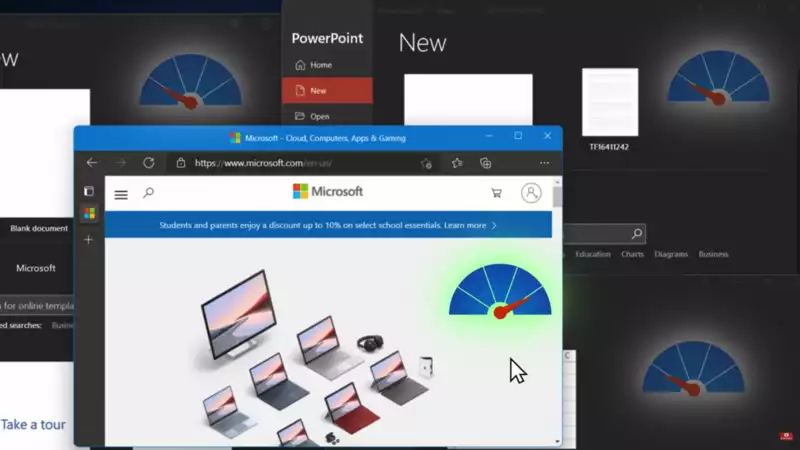Windows 11 features that help bring desktops, laptops, and tablets up to speed against Windows 10 are highlighted in a new video on Microsoft Mechanics.
All of these features are explained by Steve Dispenza, Microsoft's vice president of enterprise management, and channel host Jeremy Chapman. While some of the video is not relevant to the average user, it is still fascinating to see how Microsoft is optimizing its first new operating system in six years.
A large part of the optimization is to focus the system's computing power on the apps it is currently using (as shown in the top image); even when the CPU is under load, when you open a new app, that process is prioritized by this foreground focus and is now seconds faster than it is now. In other words, even with more apps open, there should be no frustrating lag.
The same is true for the Microsoft Edge browser; Edge users may already be familiar with the browser's sleeping tabs feature. to conserve memory and CPU space and, if you are using a laptop, extend battery life as well.
The device should also wake up from sleep faster, and Dispensa explains how the key components of a Windows 11 device (such as RAM and CPU) power on faster, using the example of a cell phone that is always on standby in case it is needed, CPU prioritizes key functions so that they can get back to work faster and more efficiently, he said. Apparently, this is a 25% improvement over before.
Minimized windows will reopen when connected and disappear again when disconnected, avoiding the mess of app windows you are currently facing when moving between docked and undocked setups.
The design of Windows 11 is also intended to increase productivity; the Mica design language is optimized for performance, but more specifically, the option to help sort open windows into different grid shapes, Snap Assist feature, which can be seen in the video.
The overall improvements seem to be enough to make Windows 11 worth upgrading if you meet the minimum requirements; other changes planned for Windows 11 include a redesigned taskbar, revamped widgets, a new Microsoft Store, and improved support for laptop and tablet users. All of these will be available to certain device users starting October 5, while others may have to wait until next year.










Comments